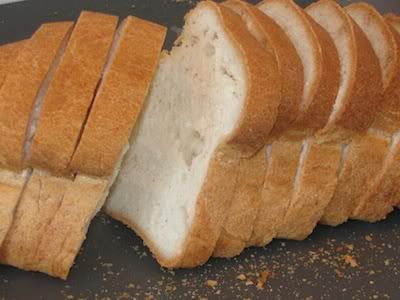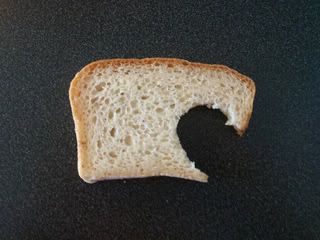I have made maybe 200 bread the last year or maybe more. I don't know. I have found a recipe that has always worked.
But now it has suddenly stopped...
I use the exact same recipe.
This is normal:

And this is how it gest now:

Sometimes it also falls in the middle (like a u)
Sometimes is also seems a bit raw..
I have made about 50 bread the last month and it is the same problem every time...
The last 20 bread I have tried different things like using less water, less rising time, higher heat ++ The bread is getting better now that I'm using less water.
Before I use 940g flour and 1L water, today I used 1000g flour and 950ml water.
Why has this cahnged?
Yesterday I made cinnamon rolls. I have use that recipe so many times.. The dough was okey, it did rise very well. But when I put them into the oven they did not continue to rise (as they normally do..) they stayed the same hight before they falled together. They where 6 cm after rising, after baking they where 3 cm...
I have called the manufacter and they say that have not changed the ingredients in the flour mix I use.
Its so frustrating.
Does anyone have a idea on whats wrong? Why do they fall?
It was so fun making bread before but now its not fun anymore.. Before they dobeled in size after rising and then they did rise about 1 inch more in the warm oven.
Please help...
I was supposed to start my own bakery before this started to happen and now I don't think I can before I have "fixed" the dough..
I just wanted to add a nother picture..
Here is a picture with 1 good dough and 1 bad:
It all started when I bought 120lbs new flour. The picute above is with flour from the "old" and the "new" boxes.
Now I have bought 120lbs new flour again with another excperience date then above but it still fails..
I think you have made bread with the new flour, and with the old flour, at the same time? You have a picture with one tall loaf and one short one -- did you make those at the same time?
If I understand you right, it sounds like the only thing it could be is the flour. If you've used some of your old flour after the new flour turned out so badly, it's not the climate changing, or your yeast going bad or something.
I think it could be the flour. Let it sit for a couple of weeks and see if that helps -- freshly ground flour sometimes makes some recipes fail in strange ways (now cue the "I grind my own flour every day it works fune you are an idiot! Do you weigh your ingedients?!!" crowd). I suppose it might be contaiminated with something, as well.
the kneading time ?
The kneading time is the same..
1. Even though the manufacturer said the ingredients are the same I would wonder:
A. if the wheat just had a bad year and has some different characterisitcs. A lot can affect the quality of the wheat from harvest to harvest.
B. Did the flour get a little too hot and sustain some starch damage during grinding.
OR
2. Have you checked your equipment lately?
A.Oven: Is there an element failing? Does it maintain the temp consistently? Does it reach the temp you set it for?
B.Proofing box:Are you using a proofing box with a temp setting? Is it too warm or not functioning correctly?
OR
3. How does the dough feel? Is there any difference in how it feels or raises? This can give you a lot of clues on ruling out the flour.
4.Has the environment changed? (warmer room temps and overproofing at usual proofing time?)
5.Have the other ingredients changed?
A.Water changed at the source-municipality using a different water purification method?
B. Is the yeast active?
Something obviously changed. Try flour from a totally different source just to rule out the flour.Check the equipment. Pay attention to the dough consistency and proofing time/temp.
If the flour is the only thing that's changed, then that's likely the problem. You are probably very familiar with your bread, having baked it so much. Do you notice anything different about the dough with the new flour, like it's sticky or loose, or doesn't behave the same as before? It's possible to overmix and destroy the gluten, and the dough becomes very sticky and smooth.
So what could be wrong with the flour that would cause this? The dough (more like a batter, with 100% hydration) either is not supporting the yeast with nutrients, or is not strong enough to contain the gas produced by the yeast.
You call the flour a 'flour mix'. Can you tell us what is in it? Can you give us the recipe for the bread and your procedure for mixing and baking? That might help. Is there anything that might have changed like a new water source or high temperatures?
Here are some experiments to try. You may not want to incorporate these changes into your production bread, but they might help diagnose the problem:
To improve gluten development:
Try a high quality flour to prove your recipe (KA in 5 lb bag)
Add some gluten to the mix.
Try a two-stage hydration process to develop the gluten. (Start with less water till the gluten is developed, then add the rest of the water. Look at the ciabatta recipes here on TFL.)
Reduce the dough conditioners in your recipe like oil, eggs, ascorbic acid, fava bean flour and so on.
To help the yeast:
Try a new package of yeast.
Use more yeast.
Add some nutrient like malt or honey to the batter
Use bottled water.
Good luck. Please let us know how it's going.
I wonder what the malt content of the new flour is? Is it the same brand of flour?
The new flour, was it all purpose? Could it have been made from soft wheat?
The producer say tha flour is the same.
The bread is glutenfree so it has nothing to do about the gluten :(
The dough feels a bit different then it did before.
When the dough rise it seems like if rise more flat then before.
I have tried fresh and drid yeast, there is no difference...
OK, that's a different matter then. I don't have any experience with gluten-free baking, but I suspect that there is some complicated processing to make the flour mix gluten-free. Something needs to give the dough strength, and that something seems to have disappeared, despite the reassurances of the vendor. Maybe someone with experience with GF baking will respond here.
You said it feels different. In what way?
I think that the experiments that I suggested would still be worthwhile to diagnose the problem. Is there another source of the mix that you could try? If you have any of the old flour, I would makes a small batch just to prove that only the flour has changed. I would also leave out all the dough conditioners.
I don't think anyone is going to be able to help you without knowing more about your recipe, vendor, and the results of some trials. Sorry.
I noticed on the first photos that the crust is much lighter on bottom and sides (the one with the vampire bite...) Is it possible a lower coil in the oven is not heating up?
Hm... You are into something there.. I'm not sure.
How can I check it?
with the door open (coils hidden) and touch the floor inside of the oven. (Do not touch visable coils, just watch them turn red.) Then turn on the lower heat, you should feel the metal warming up, remove your hand before it gets too hot to avoid burning it. If your oven is still cold, try the upper/lower heat.
Note: Convection will not normally heat up the bottom and walls of the oven (with the door open) because the heating unit is in the fan.
Mini
I think I have convenction oven.. I use the fan and bake 6 breads in to hights..
and stick it into the middle of the oven, front. Turn on the convection and see how long it takes to get up to the set temperature. Check with your manual but I suspect it's not putting out the heat it should.
You may end up calling a repair person. You can check on line for DIY info.
Another way to check even heating is to bake breadcrumbs. Spread breadcrumbs evenly over two cookie sheets (you said you bake on two racks, I believe) and bake them on the same racks you bake bread on, with the same settings you use for your bread. They should brown evenly. If not, have the oven serviced. Make all the breadcrumbs from the same bread, and cut off the crust since it won't toast at the same rate as the crumb.
Thanks! I will try that later to day!
This start to get very frustrating..
I made 6 bread this week then turned out great.
Now I have 6 new in the oven and they are flat. And the recipe is almost identical as the 6 good breads!
I'm making 6 new later today and will try another oven then to see if its the oven thats the problem.
Sometimes when I can't make sense of a situation, I explain it to another person, and I find myself identifying the problem as I speak. In your case, it might be useful to have someone else watch you as you bake, and explain to them what you are doing. It's hard for us to understand what is going wrong with your bread without being there with you in your kitchen. Even if the observer is not a baker, you might find that by explaining every step you will discover the problem. And of course keep lots of notes about every change you make. Good luck.
What is different?
They have flax seed in them..
Can air moisture have something to say?